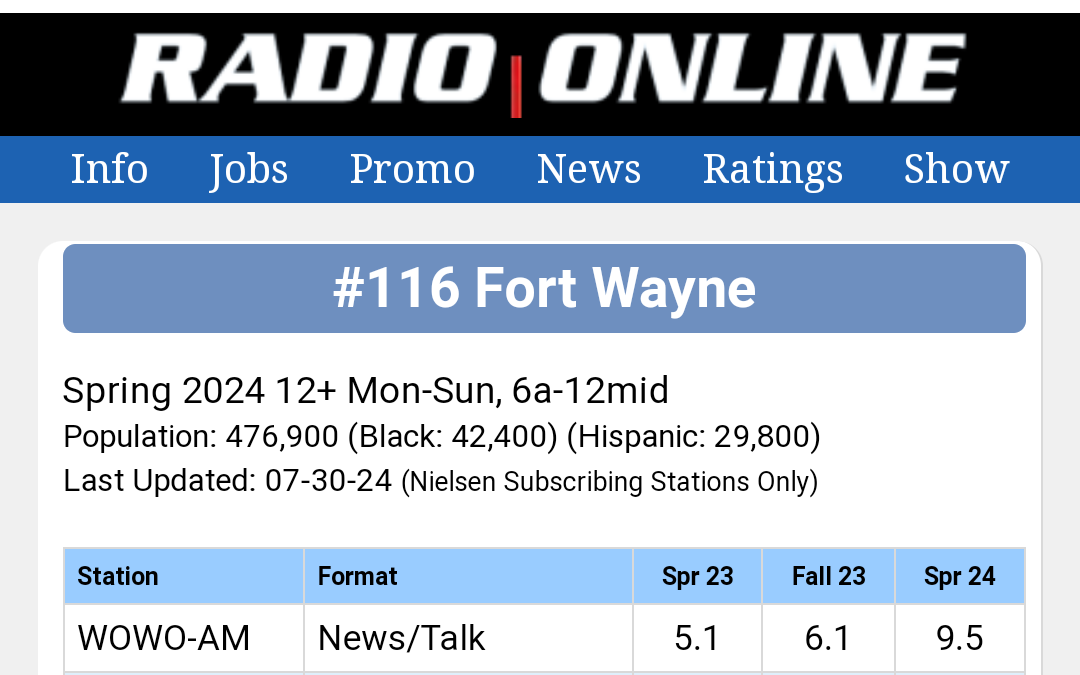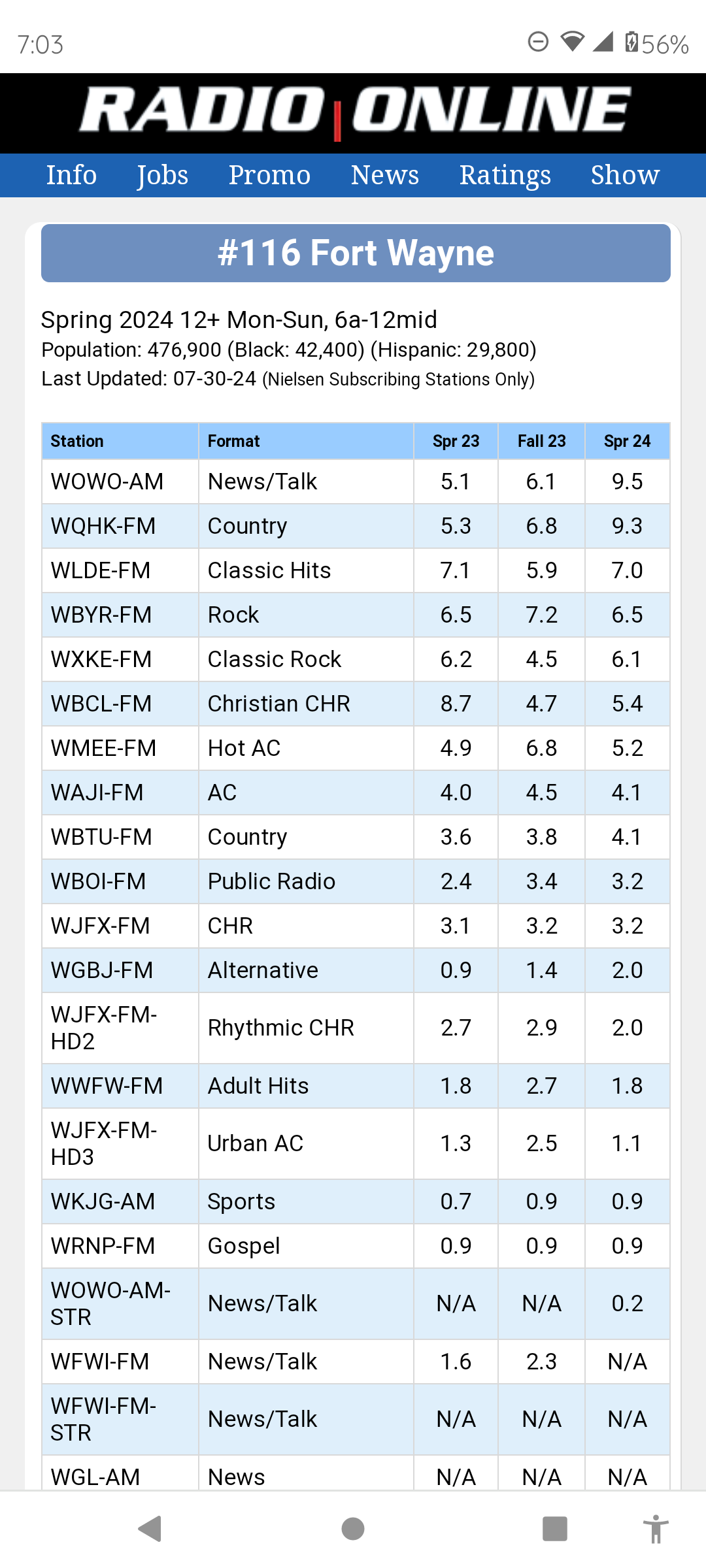
Audio Advertising: Sports Talk on the Radio
Continuing a short series focused on Audio Advertising as it’s sometimes called, this week I’m going to highlight a radio format we call Sports Talk.
As a radio veteran of a few decades and a radio listener for even longer, listening to sports on the radio was a part of the my life… forever.
A couple of recent studies present some fresh information on why sports radio is a great choice for businesses to advertise too.
First my personal listening history starting as a kid in the 1970’s…
My next door neighbor was a fan of the Cincinnati Reds and during the summer he blasted the game from 700 WLW as he worked in his backyard. Johnny Bench and Pete Rose were familiar to me then because of the play by play games I heard from over the fence. In the colder months, I listened to the Boston Celtics with Larry Bird on WBZ as I layed in bed with my battery operated transistor radio. Fort Wayne’s WOWO radio, introduced me to the excitement of Komet Hockey with legendary broadcaster Bob Chase. He was still calling the home games when I joined WOWO in 2013.
Another tradition listening to WOWO was Memorial Day weekend and the broadcast of the Indy 500 on Sunday afternoon. Only once have I attended in person but nearly every year I heard the lap by lap coverage as A.J Foyt, Al Unser and Bobby Unser took the checkered flags during my youth.
High school sports on the radio were a mainstay at the first two stations I worked at full time in Marion and Kokomo Indiana. During the time I lived in Detroit, I got to hear the late Ernie Harwell on WJR sharing the Tigers games and even got to meet Ernie when we had him as a guest on our stations Christian Talk Show.
Returning to Indiana and fast forwarding a few years to when my daughter played in the marching band for the Tippecanoe Valley Vikings and I lived about 90 minutes away, I’d listen to the game as I was driving into town to pick her up along with her brother and sister for the weekend as Rita Price did the play by play on WRSW.
I remember all these sports broadcasts clear as day even the ones that are decades old and I’m not a sports junkie. It was exciting to hear the live drama as it happened in the moment.
In the past couple of decades, I’ve worked for stations that carry college sports, pro sports and high school games. Many of the businesses that advertise do it as a passion play. They are fans of a team because they are alumni, or their kid goes to school there. Perhaps it’s the home town pride but there’s something beyond the recognition of having your business as a sports sponsor on the radio that doesn’t get talked about alot.
The ROI of Sports Talk Radio. It’s not always easy, darn near impossible to measure the number of listeners to a specific game on a local radio station because that’s not how rating services work. But there are plenty of antidotal stories from business owners of how advertising on sports talk radio boosts their business.
Here’s some data from a couple of studies that just came out this season.
An analysis of more than 50 locally and nationally advertised brands in seven major U.S. sports markets shows sports-formatted radio stations not only attract listeners who are active fans, but those who are aware of — and are more likely to interact with — advertisers on those stations.
That’s the opening paragraph from an article titled New Research Shows Sports Radio Is ‘A Game-Changer For Brands.’
Here’s more:
Participants in the study — conducted by Vision Insights in July among nearly 2,300 sports fans age 18+ in Boston, Chicago, Dallas, Detroit, Philadelphia, New York and San Francisco — give sports audio an advantage over other electronic media. The survey finds that while nine in 10 sports fans listen equally to sports talk and live game broadcasts, sports radio listeners are four times more likely to catch a brand’s message there than on TV, while 73% of fans spend more time following their favorite teams on sports audio than sports-related digital media.
Did you catch that? Sports talk radio listeners are 4 times more likely to be paying attention to your ads compared to watching sports on TV. Also over 70% of sports fans spend more time following their teams on the radio compared to other sports themed digital media.
There’s more great news for businesses who advertise on sports talk radio:
…the results of a larger-scale Vision Insights survey of more than 100,000 respondents age 13+ conducted between June 2023 and May 2024, showing that fans are four times more likely to trust brands that support their teams, and that brands doing do receive three times more positive feedback. In addition, fans are twice as enthusiastic about brands that align with their teams.
That article concludes with this summary:
“Advertisers aren’t just background noise for sports listeners, they’re part of the action,” “Sports talk listeners pay attention to ads, unlike many TV viewers who scroll TikTok or go for snacks during ad breaks. This boosts awareness for both national and local brands, with fans finding sports talk ads more relevant, trustworthy, and memorable than TV ads.”
One more recent article that has a couple of quotes to share about sports talk and play by play on the radio:
Audio play-by-play listeners are far more sports engaged and passionate versus TV viewers
The TV and AM/FM radio NFL broadcasts have very different audience profiles. The TV audience consists of casual sports fans.
The AM/FM radio play-by-play audience is far more sports passionate and engaged. This distinction has a significant impact on advertising effectiveness.
What should you do with all this information? Contact me Scott Howard because I happen to have access to the only local full time sports talk radio station in Fort Wayne Indiana, 1380 The Fan and we also carry some sports on our news talk station WOWO. Email Scott@WOWO.com






